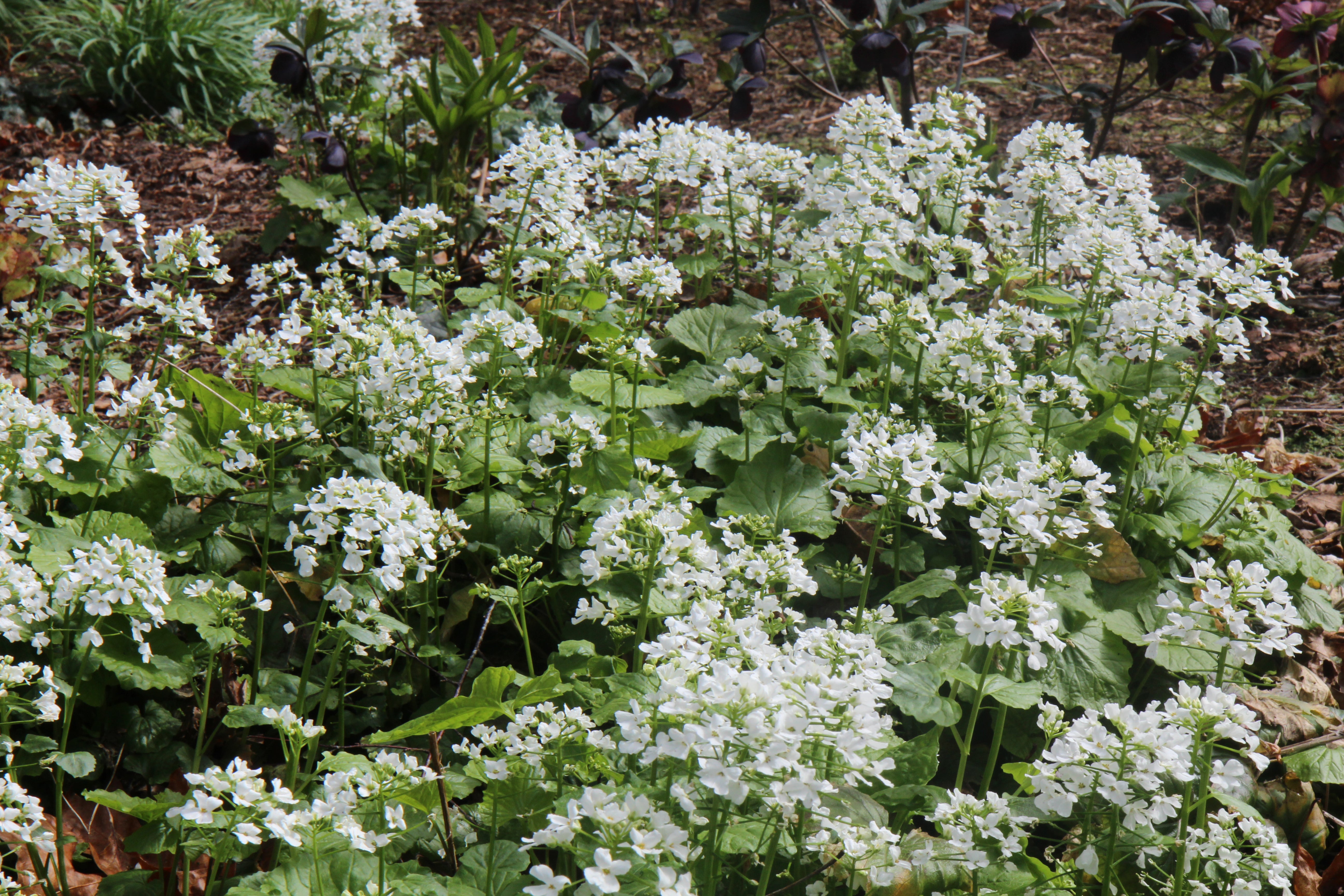Pachyphragma macrophyllum
Approx. 0.5 litre pot
About this cultivar:
Pachyphragma macrophyllum provides rounded, semi-evergreen, scalloped green basal leaves, lying in rosettes and smaller stem leaves, with flat clusters of small white flowers appearing in early spring. Small green fruits in the shape of upside-down hearts soon follow.
Often mentioned as great for weed-free-ground-cover, that is true, however it is a much more exceptional plant! Easy to grow, shade or sun, flowers for a long time, and somehow always noticed by passers by. Try pairing with other early spring flowering plants like Erythronium, Crocus, and Narcissus.
Also often mentioned as an 'under-rated' plant - this is also true!
- Position: Full sun, Partial shade, Full shade
- Soil: Almost any soil - grows well in Ballyrobert!
- Flowers: February, March, April, perhaps May and June
- Other features: Great Ground Cover, Dappled Shade or Full Shade Loving, Woodland plant
-
Hardiness: H6 - Hardy in all of UK and northern Europe (-20 to -15°C),
Fully hardy - grows well in Ballyrobert! - Habit: Clump forming, Bushy
- Foliage: Semi-evergreen
- Height: 15 - 45 cm (0.5 - 1.5 ft)
- Spread: 15 - 45 cm (0.5 - 1.5 ft)
- Time to full growth: 2 to 5 years
- Plant type: Herbaceous Perennial
- Colour: White, green
- Goes well with: Use as Groundcover. Try pairing with other early spring flowering plants like Erythronium, Crocus, and Narcissus. You can also try it with Carex, Helleborus, or small ferns.
About this genus:
Pachyphragma is a genus of flowering plants belonging to the family Brassicaceae (commonly known as the mustards, the crucifers, or the cabbage family). Pachyphragma macrophyllum is the sole member of this genus, in other (fancy) words it is monotypic.
It has glossy leaves and broad, flat clusters of white, violet-like flowers that appear in early spring. The flowers have an unpleasant scent. Flat, distinctive fruit is then held above the foliage, extending the season of interest.
It native to moist beech woods in Turkey and the Caucasus and is mostly used for a ground cover, although it is slow-growing, and much better than 'ground cover' would suggest.....




















